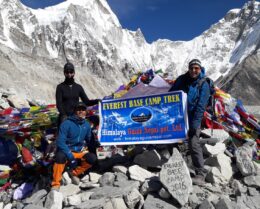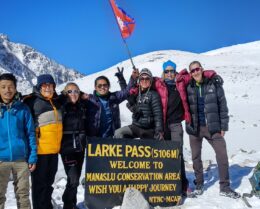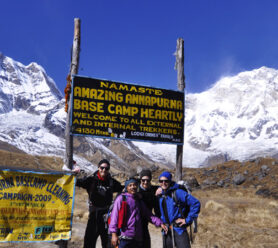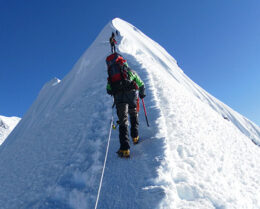How to get to Lhasa Namtso and Everest from Kathmandu?
PUBLISHED ON 14 September, 2023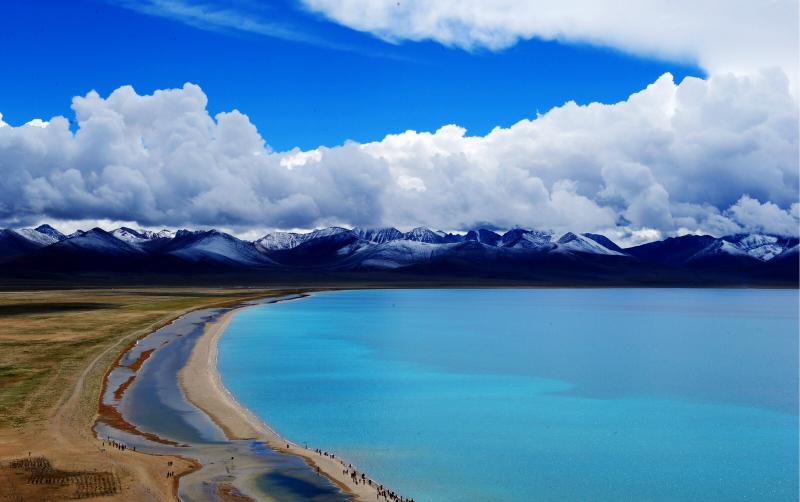
Tibet is a vastly uncharted region that you should visit if you want to get away from the crazed crowds. This high-altitude journey will take you through several breathtaking locations in Tibet. After exploring the spectacular Namtso Lake at 4718 meters above sea level, you will go to the Everest Base Camp at 5,2000 meters. Traveling to Lhasa Namtso and Everest from Kathmandu will expose you to some of the most amazing landscapes that have ever existed while passing through some of the world’s most challenging geography.
Lhasa Namtso
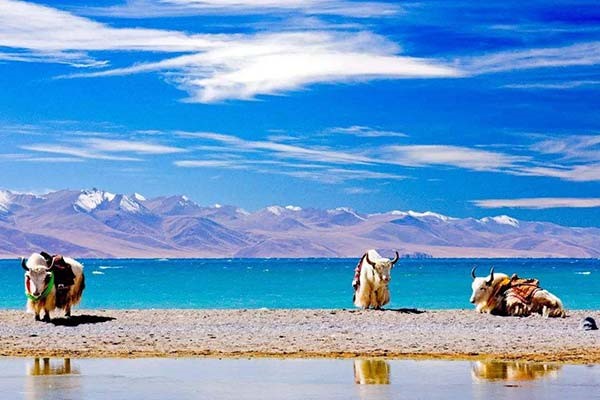
If you are interested in the Namtso Lake Tour: Book Now
The second-largest lake in Tibet is Namtso Lake. It is located 250 kilometers north of Lhasa. Namtso Lake spans 30 kilometers in the south and 70 kilometers in the east. This lake has a surface size of 1920 sq km and is located at a height of 4748 m.
A well-hung Tibetan prayer flag makes the surrounding small Himalayan peaks even more stunning. In Tibet, this lake is likewise revered as a holy body of water. A day trip or overnight stay at a basic guest home around Namtso Lake are both possible from Lhasa.
Visit the significant Tibetan monuments while touring the historical city of Lhasa. The top places to see in Lhasa are the Potala Palace, Jokhang Temple, Barkhor Street, Drepung Monastery, and Sera Monastery. And, Lhasa Namtso and Everest from Kathmandu will be a memorable journey.
The international airport has a connection with Lhasa. Only Nepal and flights from anywhere in China are viable options. Additionally, it has a train connection to the major Chinese cities. Touch Private Lhasa Namtso Lake Tours are available from Nepal or directly from China through Kailash Travels and Tours.
Namtso Lake Altitude
Lake ‘Namtso’ is situated 4718 meters above sea level. Namtso is sometimes referred to as a “sky lake” or a “Heavenly lake” due to its great altitude.
Even in the summer, snow is frequently present in the nearby Nyenchen Tanglha mountains, which have snow-capped summits.
Before visiting Namtso, you need to acclimate to the high altitude. You can visit Central Tibet for a few days before heading to the lake, or you can stay a few days in Lhasa before relaxing on the edge of the lake.
Weather at Namtso Lake
The scenery is breathtaking in the warmer months. The skyline is painted in amazing colors with various sun tones. Throughout the day, Namtso Lake’s reflection of the sky’s hue can range from a light greenish-blue to a deep blue. Of course, sunrise and sunset are the best times to visit Namtso for photographers. You can see stones under the water because the water is so clean.
Even in the summer, the mountains around are frequently covered in snow. The panorama is beautifully framed by the snow-capped mountains.
The region has a harsh environment because it is located in the north and at a high altitude. There is a significant drop in temperature at night, even in the warmer months.
July and August have the potential to be rainy or even snowy. You should have rain gear and a warm jacket handy.
Trekking Near Namtso Lake
Near Namtso Lake, there are three primary walking routes.
Trekking from Damxung to Namtso Lake is the first. Despite once being a well-traveled route, the current route follows a road. It is preferable to pick an alternative route if you want to spend time in nature.
A significant pilgrimage route circles the lake entirely. It is well-liked among Tibetans and takes roughly a week to finish. Tibetan pilgrims come to this holy lake to circle it and get virtue. And, in Lhasa Namtso and Everest from Kathmandu, you will be trekking to similar places.
How to go to Lhasa from Kathmandu
What is known is that you can only accomplish this as part of an organized trip, regardless of where you decide to travel to Tibet (Nepal or China). These excursions are only feasible with the assistance of travel agencies, who can arrange for everything for you, including a private vehicle, a driver, a guide, lodging, meals, etc.
Because you need to obtain several permits and make arrangements for your trip, you should get in touch with these travel agents at least six weeks before you depart. And, in Lhasa Namtso and Everest from Kathmandu, the journey will explore the same.
It’s important to distinguish between organized tours and group travel while talking about them. You don’t have to go to Tibet with a tour group; joining one is optional. Traveling alone is frequently associated with greater costs and fees, however, many companies are eager to assist you in splitting your expenses with another traveler.
Going to Lhasa from Kathmandu by Overland
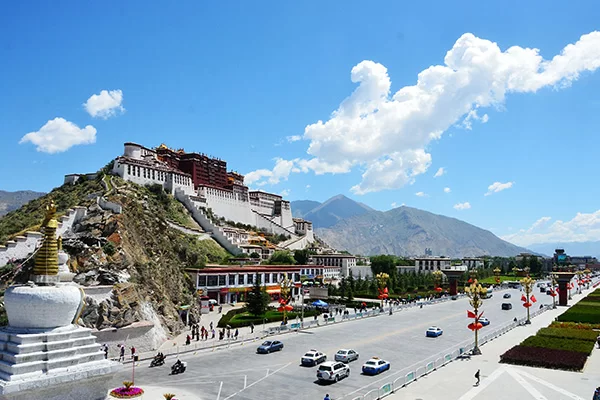
Unfortunately, a terrible earthquake struck the region in 2015 that connected Nepal and Tibet, completely cutting off-road travel between the two towns. The only means of transportation available to tourists was a flight from Kathmandu to Lhasa.
However, the Tibet Tourism Bureau in Lhasa has informed us that the Gyirong Port border, which separates Tibet from Nepal and is 160 kilometers from Kathmandu, will reopen in late August 2017. Despite being severely damaged, the Zhangmu-Kodari Port remains closed for repairs.
Any organized trip you select to go between the two cities will have a similarly similar schedule and time frame; it will typically last 7-8 days, including time spent at other tourist hotspots.
To give you an indication of how long it takes to go the full 1000 miles between Kathmandu and Lhasa via the Gyirong Port, the answer is that it takes 20 hours of nonstop driving.
It is unquestionably a wise decision to go overland from Kathmandu to Lhasa because you will pass by many stunning sights along the road, including rivers, waterfalls, mountains covered in snow, and other natural wonders.
You will have the chance to see an expansive view of the fabled Himalayan mountains, travel to Everest Base Camp, see monasteries like Rongbuk, and much more. And, in Lhasa Namtso and Everest from Kathmandu, you will get to enjoy the view from a bird’s eye view.
You will go from Kathmandu to Rashuwaghadi, Gyirong, Old Tingri, Everest Base Camp, Shigatse, and Lhasa, to put it briefly. It goes without saying that you will stop at several tourist attractions along the road and stay one night between each mode of transportation while on your 7-day journey.
Traveling to Lhasa from Kathmandu by Plane
Due to the 2015 earthquake, this was the only option for passengers to travel between Kathmandu and Lhasa for a period of nearly two years. One of the most practical options for travelers is to fly to Lhasa from Nepal because it is the quickest, taking around an hour per flight. Two of the most significant airlines in the region, Sichuan Airlines and Air China, will run the service.
Tourists shouldn’t worry that flying will prevent them from seeing the stunning scenery they would have seen otherwise. The highest mountain in the world, Mount Everest, as well as the Himalayan mountains, which are breathtaking from the sky as well as the ground, will be visible to them. Usually, 1-2 flights per day are offered between these two locations.
Traveling to Lhasa from Kathmandu by Bus
Prior to the devastating disaster in 2015, one or two buses would always guarantee transportation from Kathmandu to Lhasa across the Zhangmu Border. The buses are no longer an option because this has been damaged. When this port will reopen is currently unknown.
Lhasa to Namtso Lake:
- Join a guided tour or hire a local driver to take you from Lhasa to Namtso Lake, which is approximately 250 kilometers to the north.
- The journey will offer you scenic views of the Tibetan Plateau.

How to go to Everest Base Camp from Kathmandu
The distance from Kathmandu to Everest base camp is 154 kilometers. From Kathmandu, Nepal, there are two additional ways to get to the Mount Everest base camp. You can travel by bus, jeep, or automobile overland to reach Mount Everest base camp in Tibet if you want to visit the mountain’s north base camp.
The cost of traveling by car from Kathmandu to the Everest base camp is relatively high because it necessitates a Tibet visa and permit. Today’s Nepal-Tibet border is closed, making an overland climb to Everest base camp impossible. It is now possible to fly from Kathmandu to Lhasa and then go by land to Everest Base Camp (EBC) North.
You must take an aircraft to Lukla if you want to get to Mount Everest’s south base camp in Nepal. Walking takes seven days to get to Everest base camp from the airport in Lukla. You can also fly to Phaplu Airport and then hike to EBC via Namche Bazaar as an alternative.
Recently, a different option has become accessible via the road. As an alternative to taking a flight to Lukla or Phaplu, take a jeep to Salleri and then trek to Everest base camp. The 266-kilometer trip from Kathmandu to Salleri by car takes 8 to 10 hours. It is a different route to take to reach Lukla for the EBC trip.
How to get to the base camp on Mount Everest
It is also possible to go by helicopter from Kathmandu to Everest base camp in one day if that is more your style. A fantastic sightseeing ride is a helicopter tour to Everest Base Camp, where you will have time to take pictures before flying back to Kathmandu.
Kathmandu to Everest Base Camp Trekking
Following the most popular route, the journey from Lukla through Kathmandu to Everest base camp often begins. To do this, you’ll need to take a small plane or a helicopter to Lukla, and then continue hiking from there.
Similar to skipping the tiny plane travel, one can continue their hiking route by taking the road from Kathmandu to Jiri. Depending on the schedule, the trekking distance can be covered in 10 to 20 days.
The most popular trekking route to Everest base camp is the 14-day Everest base camp trek.
Trekking from Jiri to Everest Base Camp: This famous route was taken in 1953 by Sir Edmund Hillary and Tenzin Norgay Sherpa.
These are the hiking routes that can be reached from Kathmandu by small aircraft flights and vehicle trips. However, the question of whether you can walk from Kathmandu to Everest base camp may arise. The fast retort is that it is not impossible, but has not yet been attempted, to walk or climb directly from Kathmandu to Everest base camp.
Best Time to travel to Everest Base Camp
Autumn and spring are the two main trekking and tour seasons from Kathmandu to Everest base camp. The months of March, April, May, September, October, and November fall during these times of year. These times of year offer good visibility and a clean sky for seeing the outdoors.
Although these months (other than those indicated above) are the greatest for an Everest base camp tour from Kathmandu. One can finish the trekking and helicopter tour journey at any time the tour can be operated due to weather. Before making travel arrangements to Everest, don’t forget to check the weather forecast.
Kathmandu to Everest Base Camp Helicopter Tour
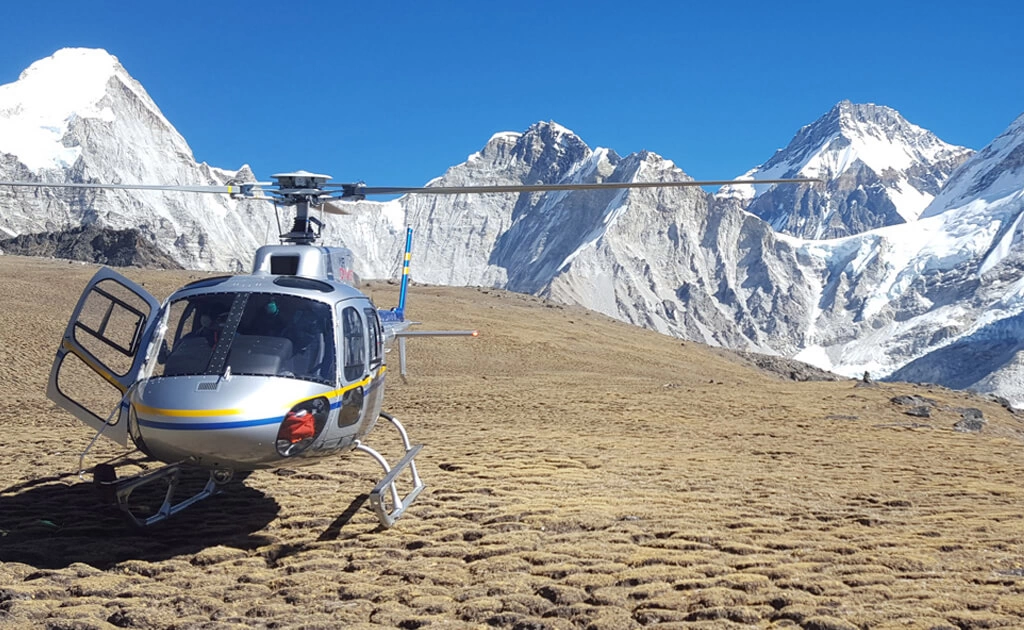
One of the most popular helicopter trips from Kathmandu to Everest base camp is the helicopter tour to Everest. As the tour is over in 4 to 5 hours in the morning, it is the quickest route to get to Everest base camp.
The Mahalangur Himalayan range surrounding mountains and Mount Everest, the tallest mountain in the world (8848.86 meters), are both visible during this helicopter trip.
The excursion is further enhanced by cloud-gliding and views of the snow-covered vistas, lush green forests, and golden hills. The Everest Base Camp Helicopter Tour, which you can start from Kathmandu, is described in more detail here.
Cost to go to Lhasa Namtso Kathmandu
Trains and flights are two ways to travel to Tibet from Nepal or mainland China. The most expensive alternative is typically taking a flight, with prices changing depending on where in China you depart from. A one-way ticket will often cost you between $130 and $500, so you’ll need to plan a round trip.
Cost to go to Everest From Kathmandu
The solution to this question is not straightforward, as it is with many other issues in life. However, depending on the sort of expedition, what is included in the pricing, and the desired level of luxury, climbers can expect to spend anywhere from $32,000 (USD) to $200,000 on their excursion.
Things you should know about Everest Region
In Nepali, Everest is referred to as Sagarmatha, and in Sherpa, Chomolangma. Everest is only around 100 miles (160 kilometers) from Kathmandu as the crow flies, but there are numerous hills and mountains in the way. On clear days, it’s occasionally possible to glimpse a portion of Everest from Kathmandu. The Sherpa people, Buddhists with Tibetan ancestry, are the most prevalent ethnic group in the Everest region.
Along the trekking route to Everest Base Camp, you will see Buddhist monasteries, stupas, and prayer walls. Know the signs of altitude sickness before hiking to Everest or using a helicopter that stops along the way.
Because altitude sickness might become fatal, always be ready to turn around. Trekking in Nepal with a guide is a wise idea, however, it’s not required. They can ensure your safety, book your lodging along the journey, and narrate what you see.
And, in Lhasa Namtso and Everest from Kathmandu, the journey will get to know about the traditions and culture of the reason which will make your visit worthwhile.
Things you should know about Lhasa and Tibet
With an average elevation of more than 4,000 meters, Tibet is situated on the Qinghai-Tibet Plateau, also referred to as the “Roof of the World”.
Along with several historical landmarks, it is also known for its plateau environment, Tibetan Buddhism culture, and imposing snow-capped mountains. And, in Lhasa Namtso and Everest from Kathmandu, the journey will get to know more about the place and its beauty.
Numerous tourists flock to Tibet as a pilgrimage destination because it is considered “a place that must be visited once in a lifetime”. Due to its unique physical and political circumstances, however, it is not as simple for foreigners to travel there as it is in other parts of China.
When is the best time to travel to Tibet?
Tibet is best visited in the summer and fall when the scenery is at its best, the oxygen level is adequate, and the weather is at its most agreeable. In the plateau region, there is a significant temperature variation between day and night, particularly in the morning and evening.
In the summer, Tibet experiences daytime highs of about 25°C and nighttime lows of 10°C. Winter and spring are generally cold seasons in Tibet.
When traveling during Winter, Summer, and Spring seasons, tourists should be mindful of the cold and warmth, pack plenty of cold-proof clothing, avoid taking baths and washing their hair often, and strictly avoid catching colds.
Please remember to use sunscreen because the sun’s rays are so powerful on the plateau. SPF50+ sun protection is advised. Remember to use physical sun protection as well by bringing your sunglasses, hat, etc.
Frequently asked questions
What is Lhasa Tibet known for?
The Capital of the Tibet Autonomous Region in the People’s Republic of China and the traditional residence of the Dalai Lama in Lhasa. The center of this 3-D perspective view image is where the Potala palace is located. With a height of 3490 meters, Lhasa is among the highest capitals in the world.
What is a fun fact about Lhasa?
Abso Seng Kye, which translates to “Bark Lion Sentinel Dog,” is the Lhasa Apso’s traditional name in Tibet. Mastiffs defended the exterior of Tibetan homes, while Lhasas guarded the interior. Lhasas would bark to warn humans of any prospective intruders.
Where is Lake Namtso located?
Namtso, a breathtaking alpine lake in Nagqu village, Northern Tibet, is around 200 miles from the capital, Lhasa. It’s considered one of Tibet’s holiest lakes, often called a Holy Lake, and is the most renowned among Tibet’s nine sacred lakes.
What is the history of Namtso Lake?
Namtso Lake was initially created during the Paleogene era as a result of movements of the Himalayan tectonic plate. The lake’s elevation is 4,718 meters (15,479 feet), and its area is 1,900 kilometers (730 square miles). The largest lake in the Tibet Autonomous Region is this salt lake.
How far is Namtso Lake to hike to Everest Base Camp?
“The Distance from Everest Base Camp to Namtso(Namucuo) Lake is 471 km”. the beautiful Namtso Lake at 4718 meters, then the Everest Base Camp at 5,2000 meters.
Conclusion
Traveling inspires us to step out of our comfort zones, pushing us to adapt and explore unfamiliar environments. It challenges us to engage with new people, embrace fresh experiences, and create cherished memories we can share with friends and loved ones. Please confirm that the Lhasa Namtso and Everest from Kathmandu tour is the best you can think of.
You may also like

